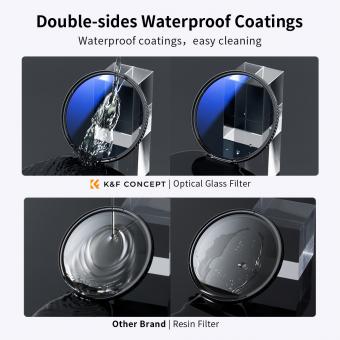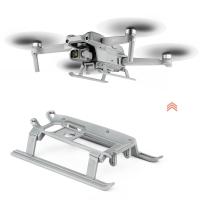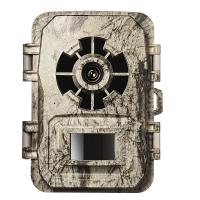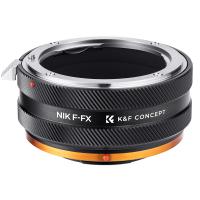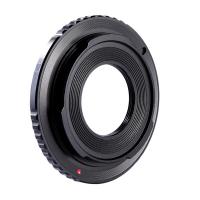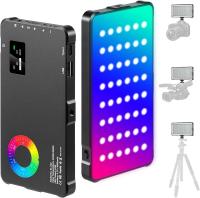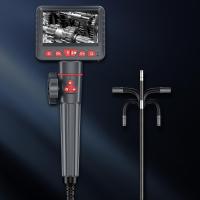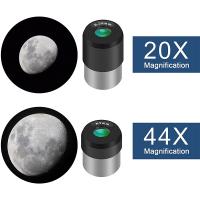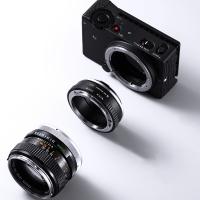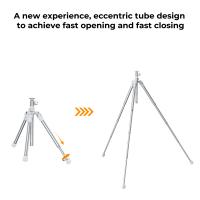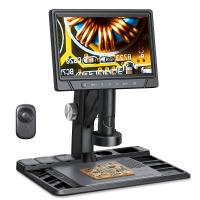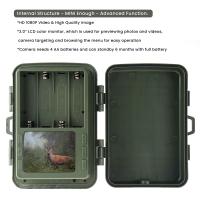How Does Digital Camera Work ?
A digital camera works by capturing light through a lens and converting it into digital data that can be stored on a memory card. When you press the shutter button, the camera's image sensor records the light that enters the lens and converts it into electrical signals. These signals are then processed by the camera's image processor, which converts them into a digital image that can be saved onto a memory card. The camera's autofocus system helps to ensure that the image is sharp and in focus, while the camera's exposure system determines the correct amount of light to capture the image. Once the image is captured, it can be viewed on the camera's LCD screen or transferred to a computer for further editing or sharing.
1、 Image Sensor Technology
Image Sensor Technology is the key component that enables digital cameras to capture and store images. The image sensor is a semiconductor device that converts light into electrical signals. When light enters the camera through the lens, it falls on the image sensor, which is made up of millions of tiny light-sensitive cells called pixels. Each pixel records the amount of light that falls on it and generates an electrical signal proportional to the intensity of the light.
The electrical signals generated by the pixels are then processed by the camera's image processor, which converts them into a digital image. The image processor applies various algorithms to the raw data to enhance the image quality, adjust the color balance, and reduce noise.
The latest advancements in image sensor technology have led to the development of high-resolution sensors that can capture images with incredible detail and clarity. For example, Sony's latest image sensor, the IMX586, has a resolution of 48 megapixels and can capture images with exceptional detail even in low light conditions.
In addition to high resolution, image sensor technology has also enabled the development of advanced features such as autofocus, image stabilization, and face detection. These features rely on sophisticated algorithms that analyze the data from the image sensor to identify and track objects in the scene.
Overall, image sensor technology is a critical component of digital cameras, and its continued advancement is driving innovation in the field of photography.

2、 Optics and Lens Design
How does a digital camera work? The answer lies in the combination of optics and lens design. The lens of a digital camera is designed to focus light onto a sensor, which captures the image. The sensor is made up of millions of tiny light-sensitive pixels that convert the light into electrical signals. These signals are then processed by the camera's image processor, which converts them into a digital image.
The lens of a digital camera is made up of several elements, including glass and plastic. These elements are arranged in a specific way to control the way light enters the camera. The aperture of the lens controls the amount of light that enters the camera, while the shutter speed controls the amount of time that the sensor is exposed to the light.
The latest point of view on digital camera technology is that it is constantly evolving. New sensors are being developed that are more sensitive to light, allowing for better low-light performance. Additionally, new lens designs are being developed that allow for better image quality and more creative control over depth of field.
In conclusion, the combination of optics and lens design is what makes a digital camera work. The lens focuses light onto a sensor, which captures the image and converts it into electrical signals. These signals are then processed by the camera's image processor, resulting in a digital image. As technology continues to evolve, we can expect to see even more advancements in digital camera technology.

3、 Image Processing and Compression
How does digital camera work?
A digital camera works by capturing light through a lens and converting it into digital data that can be stored on a memory card. The process starts with the lens, which focuses the light onto a sensor made up of millions of tiny pixels. Each pixel measures the amount of light that hits it and converts it into an electrical signal.
The electrical signals from the pixels are then processed by an image processor, which applies various algorithms to enhance the image quality. This includes adjusting the color balance, contrast, and sharpness of the image. The image processor also performs noise reduction to remove any unwanted artifacts that may have been introduced during the capture process.
Once the image has been processed, it is compressed using various algorithms to reduce the file size. This allows more images to be stored on the memory card. The compressed image is then saved onto the memory card in a format such as JPEG or RAW.
The latest point of view on digital cameras is that they are becoming more advanced and sophisticated. Many cameras now feature advanced autofocus systems, high-speed continuous shooting, and 4K video recording capabilities. Additionally, some cameras now incorporate artificial intelligence and machine learning algorithms to improve image quality and enhance the user experience. Overall, digital cameras continue to evolve and improve, offering photographers more creative possibilities and greater flexibility in their work.

4、 Storage and Memory
How does digital camera work?
A digital camera works by capturing light through a lens and converting it into digital data that can be stored on a memory card. When you press the shutter button, the camera's image sensor captures the light that enters the lens and converts it into an electrical signal. This signal is then processed by the camera's image processor, which converts it into a digital image that can be stored on a memory card.
The image sensor in a digital camera is made up of millions of tiny light-sensitive pixels. Each pixel captures a small amount of light and converts it into an electrical signal. The image processor then combines these signals to create a digital image.
Digital cameras also have a range of settings that allow you to control the exposure, focus, and other aspects of the image. These settings can be adjusted manually or automatically, depending on the camera's capabilities.
In recent years, digital cameras have become increasingly sophisticated, with features such as high-speed autofocus, advanced image stabilization, and 4K video recording. Some cameras also have built-in Wi-Fi and Bluetooth connectivity, allowing you to transfer images wirelessly to your computer or smartphone.
Overall, digital cameras have revolutionized the way we capture and share images, making it easier than ever to take high-quality photos and videos.














